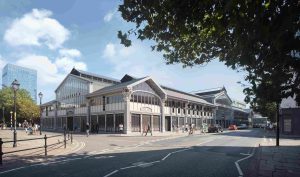Regeneration in Greater Manchester: Money’s too tight to mention

ACCESS to development capital remains the biggest barrier to Greater Manchester’s regeneration despite the availability of more sources of public funding than comparable regions.
Chris Brown, chief executive of Igloo Regeneration, said there “is virtually no risk capital” available from mainstream funding sources such as banks, although pension funds and others remain active in the marketplace.
Speaking at a Regeneration in Greater Manchester debate held by TheBusinessDesk.com in association with Addleshaw Goddard, however, Ask Developments’ chief executive Ken Knott said that banks have never been the sole source of funding for schemes and it was understandable that they are taking a more risk-averse approach.
“You have to de-risk a project to a degree to get it to a place where it amounts to a manageable risk profile and then it is entirely possible to put a funding package together to enable the project to happen,” he said.
Greater Manchester has the benefit of its own £100m investment fund which has been put together using various streams – including the Growing Places Fund, Regional Growth Fund and the Evergreen Fund created via the Joint European Support for Sustainable City Areas (JESSICA) initiative.
However, Sir Howard Bernstein made it clear that the projects likely to receive support were those which were likely to offer the greatest economic benefit to the city-region.
“Let me be very clear, this is not about getting free money,” he said. “In order to be successful, these projects have to deliver real benefits for the region’’s economy and be able to re-invest in the fund.”
Mr Brown, whose firm leads the Igloo Consortium responsible for the £30m JESSICA fund for the Merseyside city-region, Chrysalis, said that When the initiative was first announced seven years ago, it seemed like “a solution looking for a problem”.
At the height of the funding crisis many developers saw it as the only method of gaining investment for small projects, and even know many developers still see it as the first port of call.
He said that JESSICA fills a shortfall between senior debt and equity investment.
“It’s a gap the private sector is struggling to fill at the moment and we’’re getting a lot of positive feedback from developers,” he said.
Addleshaw Goddard partner Stephen Kinsey said that many organisations are having to come up with ingenious ways of finding revenue streams for regeneration projects. He cites the example of the Citilab scheme at the former Royal Eye Hospital, where Bruntwood is acting as developer partner alongside Manchester City Council, Corridor Manchester and the Central Manchester University Hospitals NHS Trust.
“The NHS had a building that was sitting empty. It was listed and had huge maintenance costs but wasn’t fit for purpose on a hospital campus. But they didn’’t have the funding to do anything with it themselves.
“What they cleverly did was say: if we look at what our maintenance costs are for the next few years, it will cost us this seven-figure sum to maintain the building sat idle. Instead, why don’’t we capitalise that sum and offer it as part of the funding for a scheme.”
This provided the first element of equity for a scheme, which could then be combined with European Regional Development Funding and investment from Manchester City Council.
“Suddenly we had a cocktail of funding that made it a viable development for a property developer (Bruntwood) to come in and introduce its own equity,” he said.
Click here to download our Regeneration in Greater Manchester supplement in association with Addleshaw Goddard.








